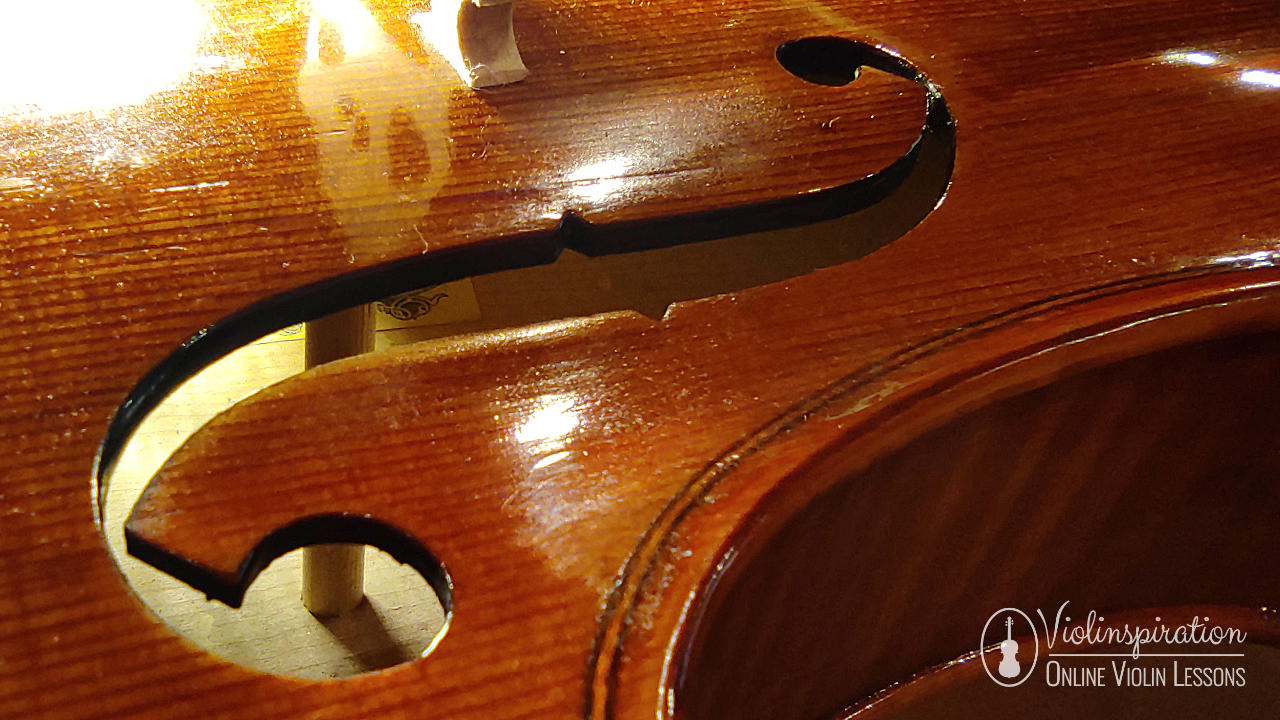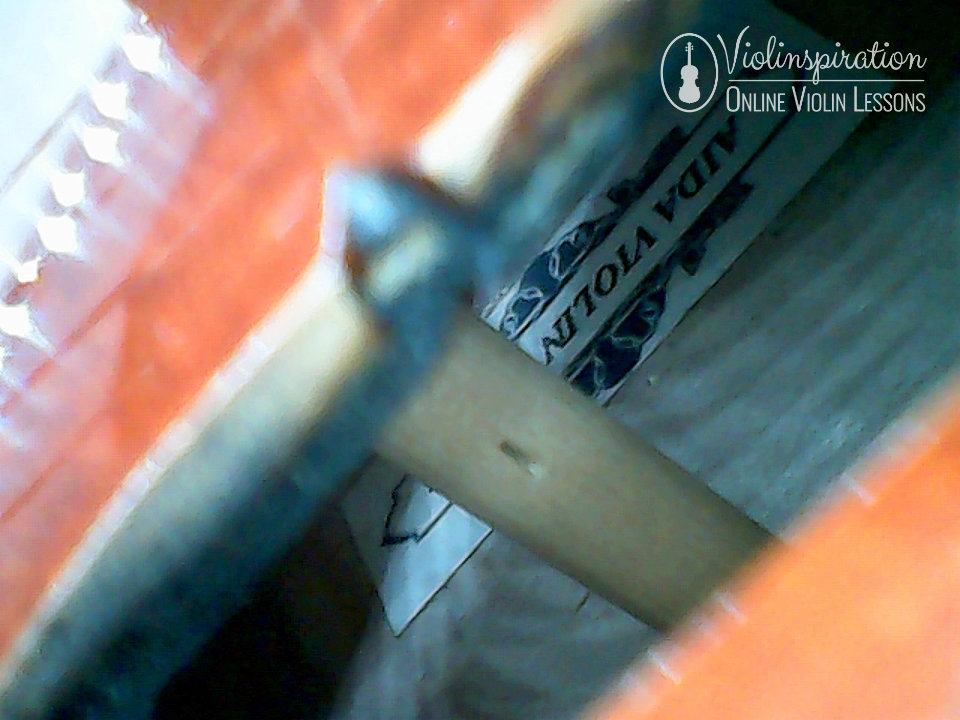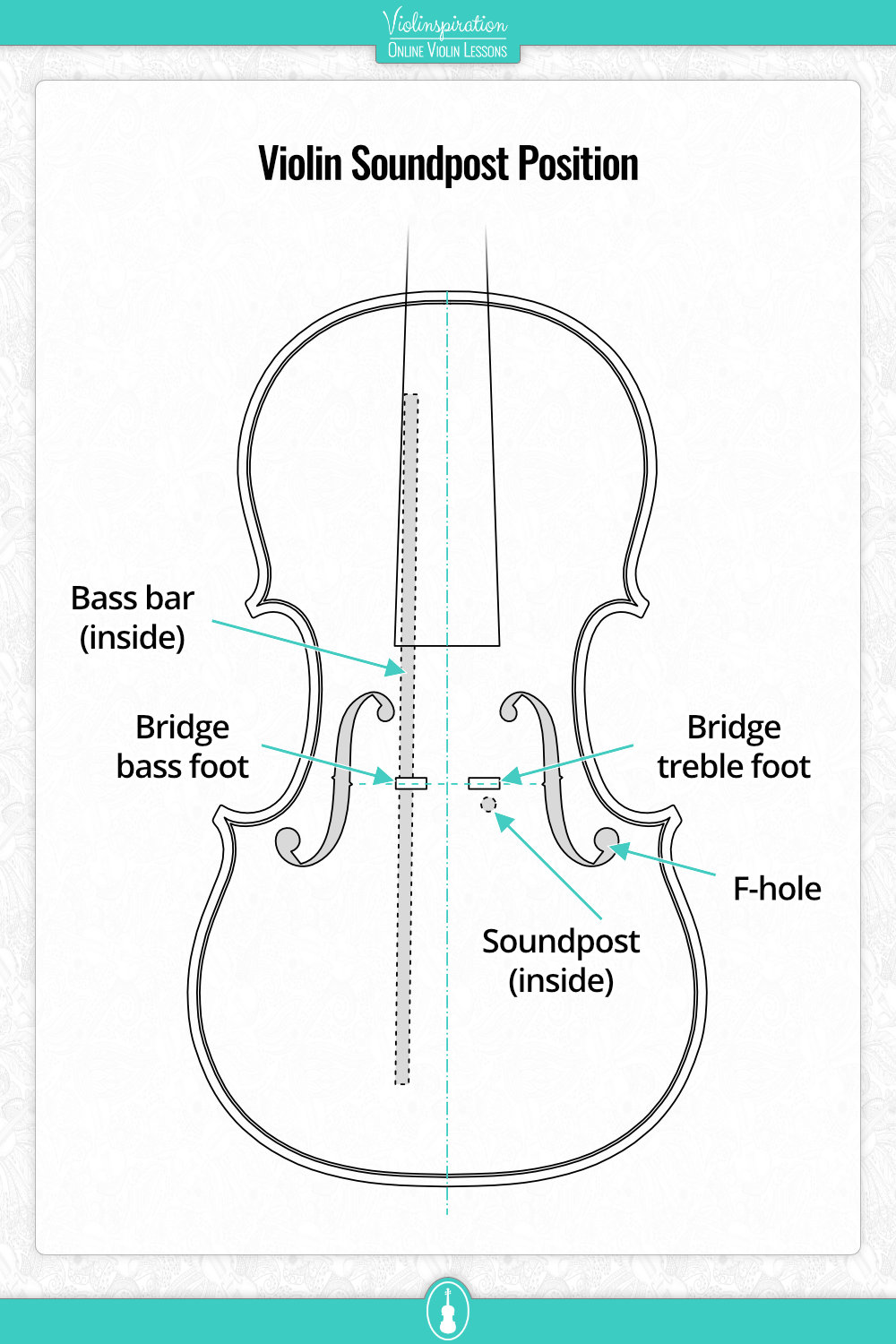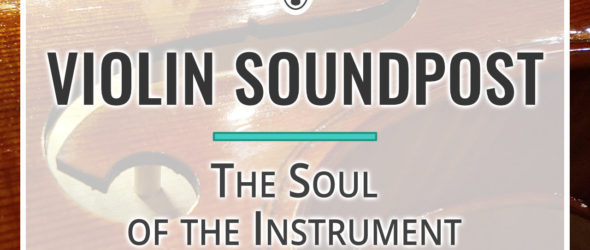You may not see the violin soundpost often, but it’s one of the most important parts of the instrument!
What Is the Stick Inside a Violin Called?
The stick inside the violin is called the soundpost. The soundpost is a wooden dowel that sits vertically inside the instrument, on the right side of the bridge. It’s usually made of solid spruce, the same wood as the top piece of the violin.
All orchestral string instruments, including the viola, cello, and double bass, have sound posts as well.

What Is the Purpose of a Soundpost in a Violin?
The soundpost holds up the top plate of the violin and supports the treble foot of the bridge (the side of the bridge that holds the A and E strings). The soundpost helps give the violin a fuller sound by transferring the vibrations from the higher two strings from the front of the instrument to the backplate.
Thanks to the soundpost, the whole instrument vibrates and makes a sound, rather than just the top.
The left side of the bridge is supported by the bass bar – a strip of wood glued on the underside of the top plate directly below the bass foot of the bridge (the side of the bridge that holds the G and D strings). The bass bar runs parallel to the lower two strings and helps transfer vibrations through the instrument, similar to the soundpost.
Without the soundpost and bass bar, the top of the violin could very likely cave in from the pressure of the bridge and strings! These two smaller inner parts of the instrument are vital.
How Does the Soundpost Stay in Place?
The soundpost stays in place from the pressure of the top and bottom plates of the violin. There’s no glue involved! For this reason, we should never remove all four strings at once – this takes off a lot of the tension that keeps the soundpost in place, and it can fall.
Never attempt to move or replace your own soundpost – this should always be done by skilled luthiers! If the length of the soundpost is too tall, it can separate the top and bottom plates of the instrument, causing lots of problems down the line. If the soundpost is too short in length, it won’t stay in place.
Where Do You Place a Soundpost in a Violin?

The soundpost is placed inside the body of the violin below the treble bridge foot, to help support the higher two strings. The exact position of the soundpost should be symmetrical with the bass bar; in other words, they should both be an equal distance from the bridge.
You should always be able to see your soundpost by looking inside the treble (right) f-hole.
The soundpost of your violin can be moved to achieve a variety of different sounds. A skilled luthier can make an adjustment to create the specific sound you’re looking for, whether that’s brighter, darker, richer, or more brilliant. If placed incorrectly, the soundpost can split, or the violin can develop a crack on the top plate.
Finding the best placement for each violin is a process full of measurements and adjustments, and, once again, should only be attempted by a professional.

Why Do Soundposts Fall?
Your soundpost may fall if you remove all four strings at the same time, if you drop your violin, or from sudden, large changes in humidity. Sometimes newer posts fall because the wood is still shrinking.
If your soundpost falls, you’ll probably hear a rattling sound coming from the instrument. If it does, immediately loosen the strings to ease tension off the top plate of your violin. Contact a luthier and take it into the shop as soon as you can.
When the soundpost is in place, you should be able to see the soundpost by looking into the treble side f-hole.
How Do You Fix a Fallen Soundpost on a Violin?
Luthiers fix a fallen soundpost by first removing the strings, bridge, tailpiece, and end button. Every soundpost has a notch towards one end that shows which side goes on the top. Luthiers use a special s-shaped tool called a soundpost setter to put the post back into place. They do this by sticking the tool into the notch of the post.

After replacing the soundpost, the repairer can look through the hole where the end button goes to view the placement of the post. Once the soundpost is in the correct location, the strings, bridge, tailpiece, and end button are put back into place.
Although with proper tools you can do it on your own, it’s better to ask a luthier for fixing a fallen soundpost. The placement of the soundpost is crucial to the sound and support of the instrument, and if it’s placed incorrectly, the instrument can suffer extreme damage.
In the video below you can see how a soundpost is fixed and what tools are used for that purpose:
What if There Is No Soundpost in My Violin?
If you’ve bought a violin without a soundpost, there’s a good chance that it was poorly made and is not a very high-quality instrument. You can buy a soundpost for your violin or have one made for you, but it might be more worthwhile in the long run to buy a higher-quality instrument.
An instrument without a soundpost is easily susceptible to damage, and will not produce the sound you’re looking for.
Possible Damage
Without a soundpost, your violin could cave in. The soundpost helps hold up the top of the instrument, and without it, the pressure from the strings can cause the top to cave in over time.
If you have an instrument without a soundpost, don’t put any tension on it – don’t tighten the strings, and don’t play it. The best course of action is to bring it straight into the shop!
How Does the Violin Sound Without a Soundpost?
The violin gets a lot of its tone from the soundpost since it helps to transfer the vibrations to the back of the instrument. Without a soundpost, the tone of your violin will sound very hollow, and won’t ring nearly as much.
A Violin Soundpost in the Researcher’s Eyes

Violin and its parts were examined in various ways by many scientists. Here I would like to share with you some facts that result from their researches.
The exact spot where the soundpost is located results in a different stiffness of the top plate. There were studies that proved that the stiffness increased when the soundpost is located behind the treble bridge foot and decreased in case of placing the soundpost under the treble foot or further towards the tailpiece, what of course results in a different sound produced by the instrument.
Also, there were studies that showed the soundpost’s mass is insignificant.
What is significant, is the stiffness of the soundpost itself, which is a combination of the wood used and its diameter. The more stiff the soundpost is, the more volume is observed when playing on the G, D, and A strings.
Now, let’s examine the location of the soundpost. If we move it towards the center of the violin, we may reach a similar result as if there was no soundpost at all!
Fun fact: We can find a predecessor of a soundpost in the stringed instruments called crwth and chrotta that were used during the medieval ages to play folk English and Welsh music. What is surprising, the bass foot of the bridge was much longer than the other one and rested on the back plate. It was possible only by placing this foot inside the soundhole on the bass side!
Conclusion
Although you can’t usually see the soundpost, it plays a crucial role in creating the beautiful sound that we love so much! Make sure to check your soundpost from time to time and take it to the luthier if it becomes loose or falls.
If you would like to know more about violin anatomy, check out my article “What is a Violin Made Of?” and download the set of posters with all violin parts:

Violin Anatomy
Set of 3 Posters
























